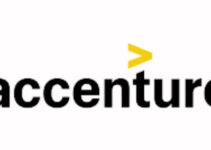Introduction
Swot Analysis of AirAsia Berhad. AirAsia is a low-cost multinational Malaysian airline. DRB-HICOM, a government conglomerate laid the foundation of AirAsia in 1993 and it became operational on Nov 18, 1996. Kamarudin Meranun and Tony Fernandes bought the airline on Sep 08, 2001. The headquarter of the company is in Kuala Lumpur International Airport, Sepang, Selangor, Malaysia.
AirAsia’s main products and services are KL Syariah Index of Bursa Malaysia, low price Santan meal, and duty-free merchandise, drinks, food, and other menus if you buy on board. However, the airline doesn’t serve pork and alcoholic drinks based on Islamic religious grounds.
According to an estimate, the annual revenue of AirAsia in 2020 was 2844 million MYR, and it has declined by 76.02%. Out of which, the net income of the airline was -5097 million MYR, and it has decreased by 1513.76%. However, the company has employed more than 20,000 employees to manage its worldwide operations.
AirAsia’s top competitors are Air India, American Airlines, Emirates Airlines, British Airways, Delta Airlines, Tiger Airways, Silk Air, Jetstar Airways, and many others.
Today, we’ll discuss the swot analysis of AirAsia. It’s going to analyze the internal and external factors impacting the world’s leading low-cost airline. Here’s the swot analysis of AirAsia as follows;
Strengths of AirAsia
Large Fleet
AirAsia has a large fleet size comprising 300 aircraft. The airline offers 400 destinations both local and international in 25 countries across the world. The large fleet size and the high number of destinations help the company to diversify its resources and amplify its target market.
Subsidiaries
AirAsia’s main subsidiaries are AirAsia India, Thai AirAsia X, Thai AirAsia, Philippines AirAsia, Indonesia AirAsia, and AirAsia X. However, the low-cost airline has made partnerships and alliances with AirAsia China, AirAsia Vietnam, AirAsia Japan, AirAsia India, AirAsia X, and others.
Sponsorship
AirAsia uses various media platforms for the marketing and promotion of its products and services. Sponsorship is also one of the great marketing tools. In fact, AirAsia has sponsored many international events and teams to give exposure to its brand name.
Like Manchester United, Queens Park Ranger, Jamshedpur FC, Singapore national football team, Malaysia national football team, and others. Such events and teams have got millions of fan following, when an airline sponsors a team or an event, then it allows the company to reach new customers.
Low Cost
According to a report by The New York Times in 2007, it described AirAsia is the low-cost pioneer in the airline industry. The airline offers 0.023 dollars per seat kilometer fare to its customers, and it is the world’s lowest airline fare. However, the low-cost pricing strategy has allowed the company to target price-conscious customers in the Asian market.
Awards
AirAsia has won many awards over the years. Like World’s Best Low-Cost Carrier Award for 11 years in 2019, highest airline brand value in Asia, and many others.
Weaknesses of AirAsia
Competitors
Many airline companies have entered the airline industry and they have made the market very competitive. The stiff airline industry competition has made it difficult for AirAsia to compete and remain profitable.
Limited Destinations
AirAsia is an experienced brand in the airline industry. But the company is only operating its business only in 25 countries. It seems as the destination and customer market share of AirAsia is only limited to the Asian countries. The company is over depending on the Asian market as its main source of earning and it’s a very risky business strategy.
Opportunities available to AirAsia
LLC Position
As we know that Asia has established a reputation as LCC (low-cost carrier) airline in the Asian and global market. It would be a strong competitive edge to AirAsia after the pandemic of covid-19 because the purchasing power of the people has dropped significantly. The airline brand should exploit these circumstances.
Indian Market
The Indian market is highly price-conscious. The airline company has already got a subsidiary AirAsia India for the local market. Now, the brand should amplify its marketing and promotional campaigns to attract the Indian price-conscious market. Since AirAsia is a low-cost airline and the Indian market is price-conscious, it would be a win-win situation for both.
Threats AirAsia has to face
Other LCCs in the Market
Air India, Emirates, and many other Asian airlines have also started following the low-cost carrier strategy to attract market share. This LLC trend has saturated the customer market, and it has declined the overall profitability of AirAsia.
Increasing Cost
The increasing fuel cost and the labor cost have amplified the overall expense of AirAsia. Since the airline brand follows the tight costing strategy and it allowed the company to offer cheap fare to the customers. The increasing cost has made it impossible for the company to offer low prices and remain profitable.
Conclusion: AirAsia Swot Analysis Example Company
After an in-depth study of the swot analysis of AirAsia, we’ve concluded that AirAsia is indeed the world’s leading low-cost airline. The increasing cost, competitors, and limited international destinations are some of the main challenges. AirAsia should expand into more countries, increase the market, and target new customers.

Ahsan Ali Shaw is an accomplished Business Writer, Analyst, and Public Speaker. Other than that, he’s a fun loving person.


